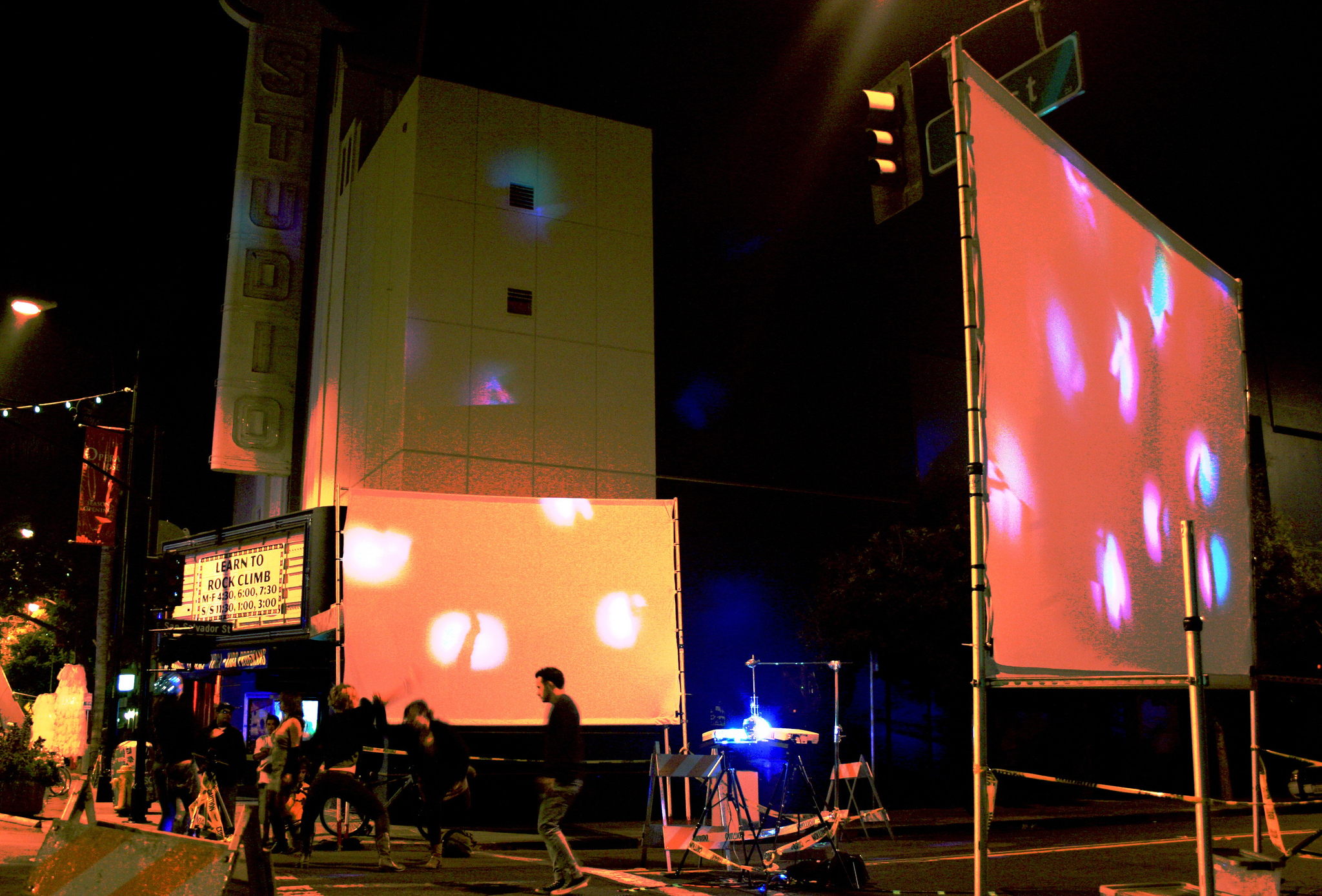Discotrope: The Secret Nightlife of Solar Cells

Discotrope uses projected video images of dancers to power the motion of a disco ball whose mirrors have been replaced with solar cells. The video is then reflected, fragmented, throughout the space. The video software was written in Max/Jitter. The software allows the performer to select videos on two projectors, move them, add "dance party" color effects, and add bursts of lightness and darkness in order to modulate the speed of the solar-powered disco ball. Performances also featured an audience participation segment, in which video from a Kinect was fed into the software and colorized with various two-tone effects. The Max patch also communicated via OSC with a PD audio patch on another machine - allowing the PD patch to generate audio in realtime from the on-screen videos, and allowing the performer to have a unified set of MIDI controls for both video and audio software.
Discotrope's video dancers are selected from the cinematic history of people dancing directly at cameras, from Edison to YouTube. It considers the exhibitionism and surveillance embedded in putting oneself candidly face to face with the viewer and dancing.
Discotrope was conceived and developed by Amy Alexander and Annina Rüst. Audio software was developed by Cristyn Magnus. Video assistant was Chloe Sanossian. Amy Alexander developed and performed the video software (Max patch), and Annina Rüst developed the solar-powered disco ball electronics system.
Year
2012
Location
Performance-Installation in various California cities and Albuquerque, New Mexico
Author
